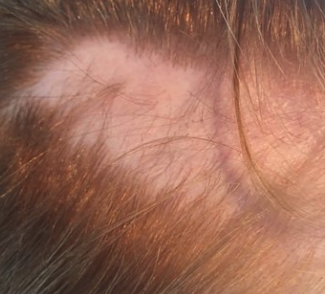Two different BaldingBlog readers had two similar questions…
Dr. Rassman,
recently some hair transplant surgeons reported very good results from body hair transplants. Other doctors remain more cautious and say it may yield good results in some, but not all patients. What’s your view on this?
Dr. Rassman,
Would you ever consider using bodyhair for some of the grafts in the scalp? I was wondering because it would seem a good way to increase density results. I am a bit paranoid about using only scalp hair to graft because I would not want to run out before getting decent density. I would think that you could mix in some sideburn or beard hair with regular scalp hair in the crown. What is your take on this. Thanks for your time.
Body hair has generally low densities (contrary to what it looks like on some men) so they do not make for a good donor supply in terms of quantity. A focus upon head hair should be primary. Then if you run out, moving to other body parts may be reasonable, especially as some studies are now appearing that indicate that this type of transplant works (leg and body to head or neck). What is still missing is the yield rates from the leg or body and the growth success from these areas.
As far as using sideburn or beard hair, this is an option in certain circumstances. They should only be considered as a last resort, when all usuable scalp donor hair is used. The other time that sideburn or temple hair can be used is when a patient is going to have a face lift and the sideburn/brow area is going to be excised as the brow is raised up.
Until the research information about body hair transplants is in our hands, it must be looked at as if it were human experimentation. A number of our patients have volunteered for this, so I am clearly interested in following the experience of others who I trust and then possibly get involved myself. I just do not want to sell hype and disappoint anyone.
I have performed one body hair transplant. The transplant was done from the abdomen to the eyebrows and it failed to yield hair in 10 months. I lost contact with the patient so I do not know if the transplant showed delayed growth or reflected some mechanism that caused it to fail. What I believe is that we need better scientific evidence on the following questions:
- Does it works reliably 100% of the time?
- If #1 is true, is that for all donor sites?
- What is the yield of viable grafts?
- What are the risks of body scarring / complications?
- Is it cost effective?
I would want to see many successful patients before I recommend it routinely for my patients.
While I can perform body hair transplants, I choose not to until they have been proven as a reliable procedure. If I make representations to my patients, I must be able to support what I say. If I embark on body hair transplants now (even on a limited basis), my patients must know the many uncertainties associated with the procedure. Until my comfort level is higher, I will not be doing body hair transplants.

